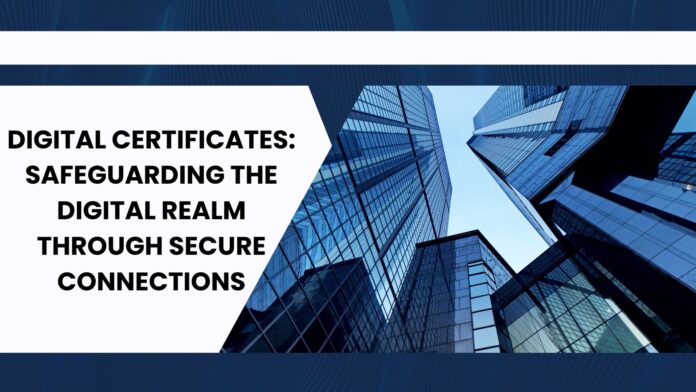In the rapidly evolving landscape of the digital age, where information is the currency and connectivity is the lifeblood of our interconnected world, the importance of securing online transactions and communications cannot be overstated. In this context, digital certificates emerge as crucial instruments, playing a pivotal role in establishing secure connections and fostering trust in the vast digital realm.
The Foundation of Secure Connections
Understanding Digital Certificates
At the heart of secure connections lies the concept of digital certificates. These certificates, akin to electronic passports, authenticate the identity of entities in the digital space. Whether it’s a website, an email server, or a software application, digital certificates provide a means to verify the legitimacy of the parties involved in a digital transaction.
Components of a Digital Certificate
A digital certificate comprises key information, including the owner’s public key, the digital signature of the certificate authority (CA), and other relevant details. The public key acts as a cryptographic key that can be freely distributed, while the private key, held securely by the certificate owner, is used for decrypting messages encrypted with the corresponding public key.
Certificate Authorities: The Guardians of Trust
To ensure the integrity of digital certificates, Certificate Authorities play a critical role. CAs are trusted entities responsible for issuing and verifying digital certificates. Their role is akin to that of a notary in the physical world, validating the identity of individuals and organizations in the digital domain.
The Mechanics of Secure Connections
SSL/TLS Protocols: Protectors of Privacy
Digital certificates find widespread use in securing communication channels through protocols like SSL (Secure Sockets Layer) and its successor, TLS (Transport Layer Security). These protocols employ a combination of symmetric and asymmetric encryption, utilizing digital certificates to authenticate parties involved and encrypt the data exchanged, ensuring confidentiality and integrity.
The Handshake: A Ballet of Encryption
When two entities intend to establish a secure connection, they engage in a cryptographic handshake. During this intricate dance, digital certificates are exchanged, and the parties verify each other’s identities. Once the authentication process is successful, a secure channel is established, and the communication can proceed with confidence.
The Varied Applications of Digital Certificates
Web Security: HTTPS and Beyond
In the realm of web security, digital certificates are synonymous with the ubiquitous “https://” prefix in URLs. Websites that implement HTTPS (Hypertext Transfer Protocol Secure) leverage digital certificates to encrypt data transmitted between the user’s browser and the web server. This is not only crucial for protecting sensitive information but also for assuring visitors that the site is legitimate and secure.
Email Encryption: Shielding Communications
Digital certificates extend their protective wings to email communication. By implementing S/MIME (Secure/Multipurpose Internet Mail Extensions) or PGP (Pretty Good Privacy), emails can be digitally signed and encrypted, ensuring the confidentiality and authenticity of the message.
Code Signing: Upholding Software Integrity
In the world of software, digital certificates are instrumental in code signing. Developers sign their software with a digital certificate, assuring users that the code has not been tampered with or compromised. This instills confidence in users and protects against malicious alterations that could jeopardize the integrity of the software.
Challenges and Future Innovations
Certificate Revocation and Management
Despite their critical role, digital certificates face challenges, with one of the primary concerns being the need for efficient certificate revocation mechanisms. Timely revocation is essential when a certificate is compromised or its owner’s status changes. Innovations in certificate management systems aim to address these challenges, ensuring the timely revocation and replacement of compromised certificates.
Quantum Computing: A Looming Threat
As technology advances, the emergence of quantum computing poses a potential threat to traditional cryptographic methods, including those used in digital certificates. Researchers are actively exploring quantum-resistant algorithms to future-proof digital certificates against the computational power of quantum computers.
Note: You Can Apply for Digital Signature Certificate for Income Tax
Conclusion
In the vast and intricate tapestry of the digital landscape, digital certificates stand as the guardians of trust and the architects of secure connections. From web security to email communication and software integrity, their influence is pervasive. As we navigate the ever-evolving digital frontier, the role of digital certificates remains paramount, ensuring that our online interactions are not only seamless but also shielded from the prying eyes of malicious actors. In a world where connectivity is key, digital certificates emerge as the linchpin of a secure and trustworthy digital future.

